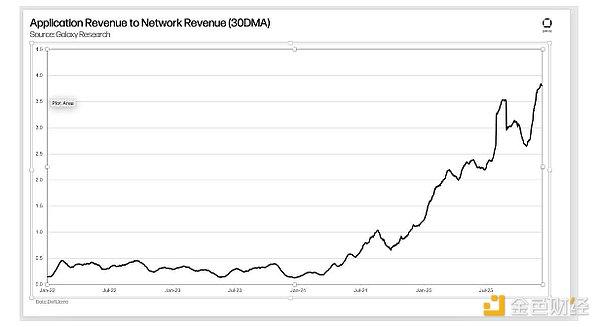Original Author: francesco
Original compilation: Biteye core contributor Crush
The collapse of SVB yesterday led to a sharp de-pegging of the USD stablecoin ( USDC ), which fell as low as $0.8788 at one point.
This has brought about a huge chain reaction. Those centralized stablecoins that should not be affected in theory are difficult to survive this crash.
The price of Frax, for example, dropped to $0.87.

The main reason for Frax's plunge is that it uses USDC as collateral. Black swan events like this week can be described as a big test for decentralized stablecoins.
What's the point of holding them, are they still subject to systemic risk?
This article takes Frax as a case study to answer the following questions:
Why does Frax use USDC as a reserve?
Can decentralized stablecoins transition to using fully decentralized collateral while maintaining minimal risk?
01 There is no best , only better
Frax rose to prominence as the first fractional reserve stablecoin protocol that is open-source, permissionless and entirely on-chain.
Frax's vision is to be the one-stop shop for DeFi : a kind of decentralized central bank. As part of their plan, they recently announced they would increase their collateralization ratio to 100%, a change driven by regulatory concerns following Terra’s debacle.
However, 100% collateralization is not enough for Frax as the current USDC depeg shows. The real open question is which assets should be used as collateral.
This is something the Frax team is working on.

For now, Frax still relies on "tokenized fiat currencies ," as the majority of Frax's collateral consists of USDC.
The range of assets that Frax can leverage is practically limited:
Real World Assets ( RWA ): This is what MakerDAO 's $DAI does
Low-risk assets: such as USDC
For much of the bull market, RWA dominated the stablecoin scaling infrastructure narrative. There is no right or wrong way forward, it depends on the ultimate vision of the agreement.
As Frax aims to be the central bank of DeFi, the best way forward is not to "take risky private sector loans", but to focus on assets that minimize risk.
The stablecoin most like this today is Circle USDC, as it is fully backed by short-term U.S. Treasury bills and cash.
As a result, Frax initially chose USDC as collateral because it was the "least risky and economically responsible" instrument in the U.S. dollar.
For example, if $DAI also takes real-world assets like Tesla loans and private company loans, that would be riskier than stablecoin-denominated USD loans.
However, with most of the collateral in USDC, Frax is not really de-correlated from centralized stablecoins, nor does it provide additional protection during market turbulence: its fate is only related to Circle and USDC.
Of course, Sam ( the founder of Frax) admitted that excessive reliance on a centralized third party does have a certain degree of external risks. The collapse of SVB just confirmed this, affecting Circle and leading to the decoupling of USDC.
In Sam's words, there should only be 1 RWA: that is the USD deposit in the Federal Reserve Master Account (FMA). Every major bank can apply to deposit dollars directly with the Fed.
Frax's ultimate solution to the collateral dilemma is to open an FMA, which is to deposit dollars in the main account of the Federal Reserve. Doing so will provide Frax with the best protection against risk. No operation is less risky than this.
However, as Sam himself mentioned, it's been a long road and full of assumptions, so whether or not this will ever happen remains pure speculation.
02 The future is difficult and difficult
Frax is a fully on-chain entity in the crypto industry. Therefore, the process of obtaining an FMA will be more difficult compared to traditional large banks.
The Fed has 6 very strict criteria and 3 different tiers to assess whether an entity can obtain FMA. Given that Frax is a blockchain protocol, it will be in a higher risk category and therefore subject to increasing scrutiny before approval.
The Federal Reserve may only grant master accounts to eligible institutions that meet the statutory definitions of member banks or depository institutions, designated financial market utilities, certain government-sponsored enterprises, the U.S. Department of the Treasury, and certain official international organizations. For eligible institutions, applicants must comply with relevant legal and regulatory requirements, including requirements for payment, anti-money laundering, sanctions, and risk management; be in good financial standing; and not pose a risk to the Federal Reserve or financial stability.
In an interview, Sam mentioned that Frax doesn't want to emulate Yuga Labs , which recently raised over $1 billion from a16z .
In Sam’s words, this introduces “bad incentives” to reward stake holders, jeopardizing the protocol’s value proposition and making Frax a centralized corporation.
A different form of organization might be a non-profit foundation, similar to what Ethereum does.
Obtaining FMA will ensure that Frax remains decentralized and provides value to Frax holders, not equity holders.
The latter might work for an NFT company (Yuga) looking to scale, but for a decentralized company aiming to be the central bank of DeFi, it would undermine the alignment of interests.
Sam mentioned the first step to not relying on USDC in the Frax Telegram group: Frax may soon start buying US Treasury bonds directly.


03 My thoughts
1. The collapse of SVB is a practical test of the entire encryption ecosystem. Frax proved itself strong enough in this test, showing its resilience and strategies for improving collateral.
2. This speeds up the process of finding alternative collateral, and direct purchases of US Treasuries may be a first step in the right direction.
3. With the launch of Fraxswap and Fraxlend, Frax has become the first one-stop DeFi protocol on Ethereum that provides stablecoins, liquidity and lending services. By controlling the entire stack, Frax further expands its ability to enforce arbitrary monetary policies in favor of stablecoins.
4. The road is long and long, and Frax has traveled all the way, going through hardships and hardships. In addition to the collateral issue, in the next few months, we will continue to monitor the progress of stablecoin regulation in the United States, which will be a critical moment in determining the success or failure of Frax.
5. Also kudos to Sam and the Frax team for their transparency. As long as you have any questions, you will get answers.
04 Translator's summary
This article uses Frax as a case study to discuss the challenges and risks faced by decentralized stablecoins. As a fully on-chain entity, Frax needs to rely on the centralized stablecoin USDC as collateral, which makes it lack additional protection during market turmoil and is vulnerable to systemic risk.
But holding USDC is still safer than taking risky private sector loans (that is, what Maker is doing to connect real assets and provide real-world entities with stablecoin DAI loans).
The Frax team is working hard to improve the security of stablecoins. It recently announced that it will increase its collateral rate to 100%, and is looking for more low-risk assets such as U.S. Treasury bonds as collateral. deposit.
In addition, they are also considering the organization of non-profit foundations to avoid becoming a centralized company.
Decentralized stablecoins are an integral part of the DeFi ecosystem. Although they face many challenges and risks, they also provide a more transparent, decentralized and open way to provide financial services.
The translator believes that with the continuous development of technology and regulatory environment, decentralized stablecoins will become more mature and reliable, and will play a more important role in the future. After this turmoil, DeFi urgently needs decentralized stablecoins connected with encrypted native assets to reduce the impact of traditional finance.
Perhaps the future stable currency will not necessarily be anchored to the US dollar, but an anchor such as CPI that can better reflect the impact of monetary policy.







